All-season tires are a great option if you don’t want to be bothered with changing your tires with the seasons. These tires are designed to perform well in all conditions, whether it’s warm and dry, raining or even snowing.
The benefit to going with an all-season tire is largely convenience. You don’t have to make the time to have summer performance tires or winter tires swapped out with the seasons, nor do you have to worry about storing the set of tires that’s not on your car.
There’s a lot to consider when you’re looking for a new set of all-season tires, so I did the legwork for you and came up with best picks in a wide range of categories. I started by looking at what the experts had to say about tires, including the folks at Tire Rack. Next, I considered what real people thought about the tires once they had them on their cars.
That narrowed down the best tire picks, but I went even further. I considered how each performed in specific weather condition situations. Some all-season tires can only handle light snow while others can handle more of the white stuff. The same goes for rain. Some all-season tires have tread patterns designed to handle more moisture, which improves wet traction in poor conditions.
Comfort is also key. Not every tire provides the same level of quiet and comfort, so my picks in these categories focus on those attributes. If your priority is passenger comfort, you need a tire that reduces noise, vibration and harshness, and this list includes all-season tire recommendations to fit those requirements.
Finally, I considered cost, type of vehicle and overall treadwear ratings in making these selections. A large part of finding the right tire is finding the right tire for you, your vehicle and how you drive. There are all-season tires on this list to suit most every need. After checking out the best all-season tires, make sure to read on afterwards for some handy tire shopping and care tips.

 \n ","topic":"","ttag":"","searchDim":"article-body|listicle|image","variant":"article-body|listicle|image","viewguid":"","event":"listicle|image|1","correlationId":"","_destCat":"https:\/\/www.tirerack.com\/tires\/tires.jsp?tireMake=Michelin&tireModel=CrossClimate2","productName":"","formatType":"IMAGE","location":"LIST","position":1,"sku":"","dwLinkTag":"article-body|listicle|image","selector":"#article-body #listicle-d3786c37-3fc3-4b47-8b10-7023f221ba77 .itemImage"}}” rel=”noopener nofollow” target=”_blank”>
\n ","topic":"","ttag":"","searchDim":"article-body|listicle|image","variant":"article-body|listicle|image","viewguid":"","event":"listicle|image|1","correlationId":"","_destCat":"https:\/\/www.tirerack.com\/tires\/tires.jsp?tireMake=Michelin&tireModel=CrossClimate2","productName":"","formatType":"IMAGE","location":"LIST","position":1,"sku":"","dwLinkTag":"article-body|listicle|image","selector":"#article-body #listicle-d3786c37-3fc3-4b47-8b10-7023f221ba77 .itemImage"}}” rel=”noopener nofollow” target=”_blank”>
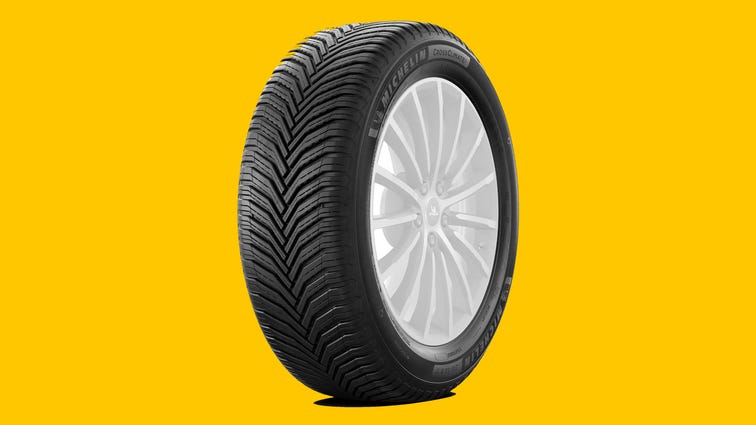

Michelin
This Michelin CrossClimate all-season tire delivers a solid mix of warm weather and winter weather performance. It features the three-peak mountain snowflake (3PMSF) symbol, which is used by tire manufacturers to indicate a tire rated for snow and ice. Not every all-season tire gets that symbol, which is something you should look for if you live where it frequently is cold and snowy.
This Michelin CrossClimate tire is also very highly rated by consumers and by the experts at Tire Rack. It has a controlled ride with a minimum of road and wind noise that makes it great for longer drives. It also handles well in a variety of conditions from dry to snowy, delivering on the promise of all-season performance. It rounds out that performance with good treadwear ratings, plus a six-year and 60,000-mile tread life warranty.

 \n ","topic":"","ttag":"","searchDim":"article-body|listicle|image","variant":"article-body|listicle|image","viewguid":"","event":"listicle|image|2","correlationId":"","_destCat":"https:\/\/www.tirerack.com\/tires\/tires.jsp?tireMake=Continental&tireModel=PureContact%20LS","productName":"","formatType":"IMAGE","location":"LIST","position":2,"sku":"","dwLinkTag":"article-body|listicle|image","selector":"#article-body #listicle-aef345e7-4f75-4e3d-b202-c81edef8bce3 .itemImage"}}” rel=”noopener nofollow” target=”_blank”>
\n ","topic":"","ttag":"","searchDim":"article-body|listicle|image","variant":"article-body|listicle|image","viewguid":"","event":"listicle|image|2","correlationId":"","_destCat":"https:\/\/www.tirerack.com\/tires\/tires.jsp?tireMake=Continental&tireModel=PureContact%20LS","productName":"","formatType":"IMAGE","location":"LIST","position":2,"sku":"","dwLinkTag":"article-body|listicle|image","selector":"#article-body #listicle-aef345e7-4f75-4e3d-b202-c81edef8bce3 .itemImage"}}” rel=”noopener nofollow” target=”_blank”>
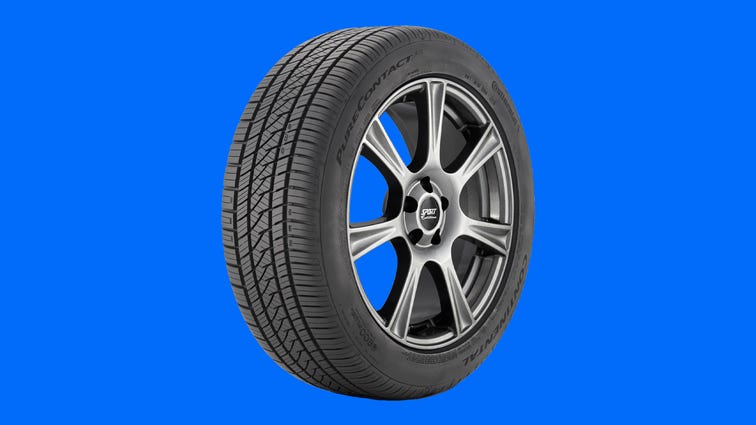

Tire Rack
The runner-up for best all-season tires overall is the Continental PureContact LS. This tire gets high marks from consumers and experts for wet traction and dry roads driving along with good cold weather performance ratings. It also offers a comfortable and quiet ride with good treadwear and a six-year, 70,000-mile tread life warranty.
The compound in these tires is specially designed for all-season use and reacts to the current temperature to reduce overall tire tread wear. The tread pattern aids in traction during high-speed cornering while also reducing noise and vibration that might disturb passengers. It provides a balance of comfort and traction that makes it ideal for all-season use.

 \n ","topic":"","ttag":"","searchDim":"article-body|listicle|image","variant":"article-body|listicle|image","viewguid":"","event":"listicle|image|3","correlationId":"","_destCat":"https:\/\/www.tirerack.com\/tires\/tires.jsp?tireMake=Michelin&tireModel=Primacy%20Tour%20A\/S","productName":"","formatType":"IMAGE","location":"LIST","position":3,"sku":"","dwLinkTag":"article-body|listicle|image","selector":"#article-body #listicle-87e8816e-a0e2-4481-bcae-03a2824ca3df .itemImage"}}” rel=”noopener nofollow” target=”_blank”>
\n ","topic":"","ttag":"","searchDim":"article-body|listicle|image","variant":"article-body|listicle|image","viewguid":"","event":"listicle|image|3","correlationId":"","_destCat":"https:\/\/www.tirerack.com\/tires\/tires.jsp?tireMake=Michelin&tireModel=Primacy%20Tour%20A\/S","productName":"","formatType":"IMAGE","location":"LIST","position":3,"sku":"","dwLinkTag":"article-body|listicle|image","selector":"#article-body #listicle-87e8816e-a0e2-4481-bcae-03a2824ca3df .itemImage"}}” rel=”noopener nofollow” target=”_blank”>
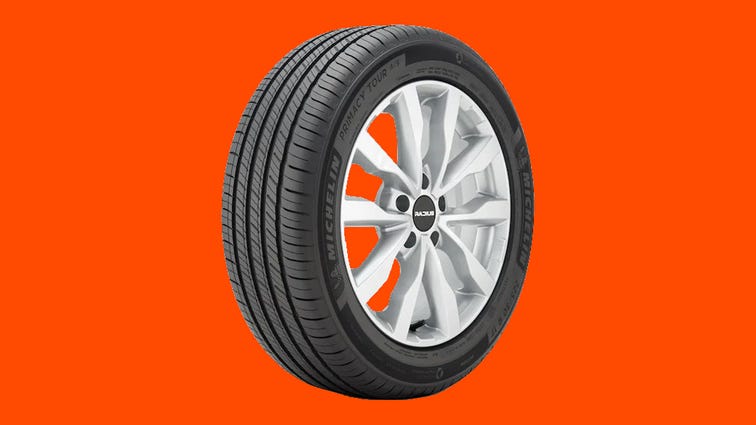

Tire Rack
The Michelin tire is a grand touring all-season pick that provides a smooth ride with minimal noise and good traction. It’s designed to deliver a premium experience whether you’re in a luxury coupe or an SUV. The tread pattern has an asymmetric design that helps reduce road noise while shoulder blocks improve grip and handling on dry roads. There are also grooves that pull water away from the contact patch for better handling when the roads are wet. That tread can also manage roads covered with light snow. A two-ply polyester cord casing further improves ride while two steel belts provide stabilization. A warranty of up to six years and 55,000 miles is included depending on the exact tire you buy.

 \n ","topic":"","ttag":"","searchDim":"article-body|listicle|image","variant":"article-body|listicle|image","viewguid":"","event":"listicle|image|4","correlationId":"","_destCat":"https:\/\/www.tirerack.com\/tires\/tires.jsp?tireMake=Yokohama&tireModel=AVID%20Ascend%20GT","productName":"","formatType":"IMAGE","location":"LIST","position":4,"sku":"","dwLinkTag":"article-body|listicle|image","selector":"#article-body #listicle-c2dfd414-637a-4507-acd7-6ac4840c3d0d .itemImage"}}” rel=”noopener nofollow” target=”_blank”>
\n ","topic":"","ttag":"","searchDim":"article-body|listicle|image","variant":"article-body|listicle|image","viewguid":"","event":"listicle|image|4","correlationId":"","_destCat":"https:\/\/www.tirerack.com\/tires\/tires.jsp?tireMake=Yokohama&tireModel=AVID%20Ascend%20GT","productName":"","formatType":"IMAGE","location":"LIST","position":4,"sku":"","dwLinkTag":"article-body|listicle|image","selector":"#article-body #listicle-c2dfd414-637a-4507-acd7-6ac4840c3d0d .itemImage"}}” rel=”noopener nofollow” target=”_blank”>


Tire Rack
You can still find good all-season tires if you’re on a budget and the Yokohama Avid Ascend GT is a great example. It’s highly rated by consumers and experts with especially strong ratings in wet and dry conditions. It’s not quite as good as some other all-season tires at managing winter weather, but those tires also come at a higher price.
Making this tire more affordable in the long-term is strong treadwear performance with a five-year, 65,000-mile tread life warranty. It combines its affordability with a quiet ride that’s ideal for minivan and crossovers, which often have lots of people onboard. As a bonus, the BluEarth branding on this tire indicates that it’s part of Yokohama’s more environmentally friendly series of tires.

 \n ","topic":"","ttag":"","searchDim":"article-body|listicle|image","variant":"article-body|listicle|image","viewguid":"","event":"listicle|image|5","correlationId":"","_destCat":"https:\/\/www.tirerack.com\/tires\/tires.jsp?tireMake=Goodyear&tireModel=Assurance%20MaxLife","productName":"","formatType":"IMAGE","location":"LIST","position":5,"sku":"","dwLinkTag":"article-body|listicle|image","selector":"#article-body #listicle-baf08ea9-04ba-407e-b6a4-5f129e2c302c .itemImage"}}” rel=”noopener nofollow” target=”_blank”>
\n ","topic":"","ttag":"","searchDim":"article-body|listicle|image","variant":"article-body|listicle|image","viewguid":"","event":"listicle|image|5","correlationId":"","_destCat":"https:\/\/www.tirerack.com\/tires\/tires.jsp?tireMake=Goodyear&tireModel=Assurance%20MaxLife","productName":"","formatType":"IMAGE","location":"LIST","position":5,"sku":"","dwLinkTag":"article-body|listicle|image","selector":"#article-body #listicle-baf08ea9-04ba-407e-b6a4-5f129e2c302c .itemImage"}}” rel=”noopener nofollow” target=”_blank”>


Goodyear
If your priority is all-season tires that will last for as many miles as possible, then this Goodyear tire should be at the top of your list. It has a six-year, 85,000-mile tread life warranty, so it’s not one you’ll need to change often, especially if you’re a low-mileage driver. It has a symmetrical tread pattern to provide good traction and a unique wear gauge. This shows the remaining tread depth continuously rather than just when it’s too low, so you’ll be able to track how fast your tread is wearing.
The tread pattern is also designed to provide good traction in a wide range of conditions. It includes grooves that draw water away from the contact patch, which helps prevent hydroplaning in wet conditions. It’s also made with an all-season compound that maintains optimum traction as temperatures change.

 \n ","topic":"","ttag":"","searchDim":"article-body|listicle|image","variant":"article-body|listicle|image","viewguid":"","event":"listicle|image|6","correlationId":"","_destCat":"https:\/\/www.tirerack.com\/tires\/tires.jsp?tireMake=Pirelli&tireModel=Scorpion%20AS%20Plus%203","productName":"","formatType":"IMAGE","location":"LIST","position":6,"sku":"","dwLinkTag":"article-body|listicle|image","selector":"#article-body #listicle-970b0d45-b599-43c6-9a26-ef557078b9e7 .itemImage"}}” rel=”noopener nofollow” target=”_blank”>
\n ","topic":"","ttag":"","searchDim":"article-body|listicle|image","variant":"article-body|listicle|image","viewguid":"","event":"listicle|image|6","correlationId":"","_destCat":"https:\/\/www.tirerack.com\/tires\/tires.jsp?tireMake=Pirelli&tireModel=Scorpion%20AS%20Plus%203","productName":"","formatType":"IMAGE","location":"LIST","position":6,"sku":"","dwLinkTag":"article-body|listicle|image","selector":"#article-body #listicle-970b0d45-b599-43c6-9a26-ef557078b9e7 .itemImage"}}” rel=”noopener nofollow” target=”_blank”>
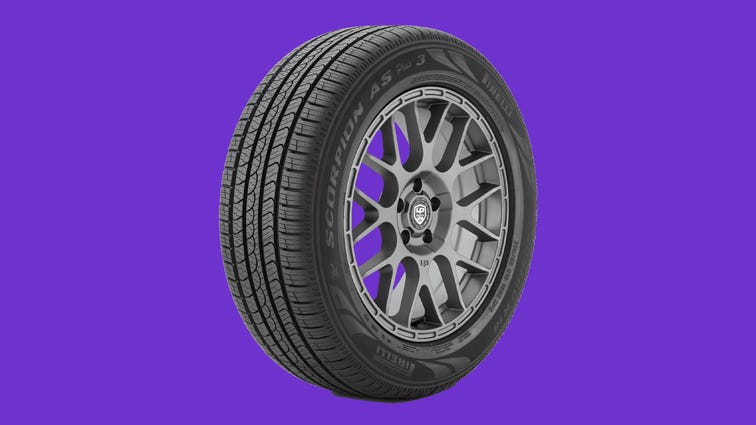

Tire Rack
These all-season tires from Pirelli deliver a comfortable ride for drivers of crossovers, SUVs and pickups. They are specifically designed to provide a high ride quality with low noise along with a long tread life. A 70,000-mile, unlimited-year tread life warranty shows just how confident Pirelli is in the quality of this tire.
The tread compound is formulated for both traction and long life with an asymmetric pattern that maximizes contact with the road. That pattern also increases traction and handling whether the road is warm and dry or wet with channels that pull water away from the contact patch to reduce hydroplaning. Its zig-zag pattern on the inner tread helps retain traction even as the tire wears.

 \n ","topic":"","ttag":"","searchDim":"article-body|listicle|image","variant":"article-body|listicle|image","viewguid":"","event":"listicle|image|7","correlationId":"","_destCat":"https:\/\/www.tirerack.com\/tires\/tires.jsp?tireMake=Yokohama&tireModel=Geolandar%20CV%20G058","productName":"","formatType":"IMAGE","location":"LIST","position":7,"sku":"","dwLinkTag":"article-body|listicle|image","selector":"#article-body #listicle-f8ad52f5-0be1-4405-8042-321406bd2a4a .itemImage"}}” rel=”noopener nofollow” target=”_blank”>
\n ","topic":"","ttag":"","searchDim":"article-body|listicle|image","variant":"article-body|listicle|image","viewguid":"","event":"listicle|image|7","correlationId":"","_destCat":"https:\/\/www.tirerack.com\/tires\/tires.jsp?tireMake=Yokohama&tireModel=Geolandar%20CV%20G058","productName":"","formatType":"IMAGE","location":"LIST","position":7,"sku":"","dwLinkTag":"article-body|listicle|image","selector":"#article-body #listicle-f8ad52f5-0be1-4405-8042-321406bd2a4a .itemImage"}}” rel=”noopener nofollow” target=”_blank”>
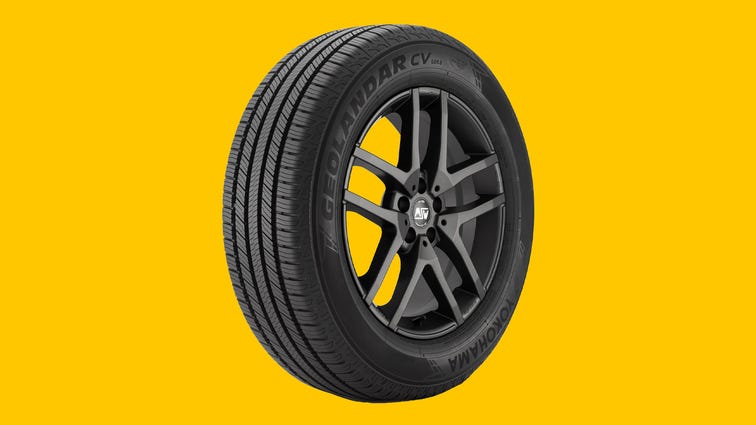

Tire Rack
Designed for minivans, crossovers and small SUVs, these all-season tires from this trusted tire brand delivers year-round performance with plenty of comfort for a vehicle full of passengers. It’s well-rated in all weather conditions from dry to wet to light snow and it has a good treadwear rating. A warranty of five years and 65,000 miles from Yokohama means you can drive further before you need to worry about paying for a replacement.
The Yokohama compound used to make this tire includes Micro Silica, with a pattern that both increases traction and more evenly distributes the load for a better tread life. It also has a unique five-pitch variation pattern that helps reduce noise for improved passenger comfort. The unique tread pattern works to move water away from the contact patch and improve stability in winter driving conditions.

 \n ","topic":"","ttag":"","searchDim":"article-body|listicle|image","variant":"article-body|listicle|image","viewguid":"","event":"listicle|image|8","correlationId":"","_destCat":"https:\/\/www.tirerack.com\/tires\/tires.jsp?tireMake=BFGoodrich&tireModel=Advantage%20T%2FA%20Sport%20LT","productName":"","formatType":"IMAGE","location":"LIST","position":8,"sku":"","dwLinkTag":"article-body|listicle|image","selector":"#article-body #listicle-b5bb1def-9270-4e0e-8183-994f2f897af1 .itemImage"}}” rel=”noopener nofollow” target=”_blank”>
\n ","topic":"","ttag":"","searchDim":"article-body|listicle|image","variant":"article-body|listicle|image","viewguid":"","event":"listicle|image|8","correlationId":"","_destCat":"https:\/\/www.tirerack.com\/tires\/tires.jsp?tireMake=BFGoodrich&tireModel=Advantage%20T%2FA%20Sport%20LT","productName":"","formatType":"IMAGE","location":"LIST","position":8,"sku":"","dwLinkTag":"article-body|listicle|image","selector":"#article-body #listicle-b5bb1def-9270-4e0e-8183-994f2f897af1 .itemImage"}}” rel=”noopener nofollow” target=”_blank”>
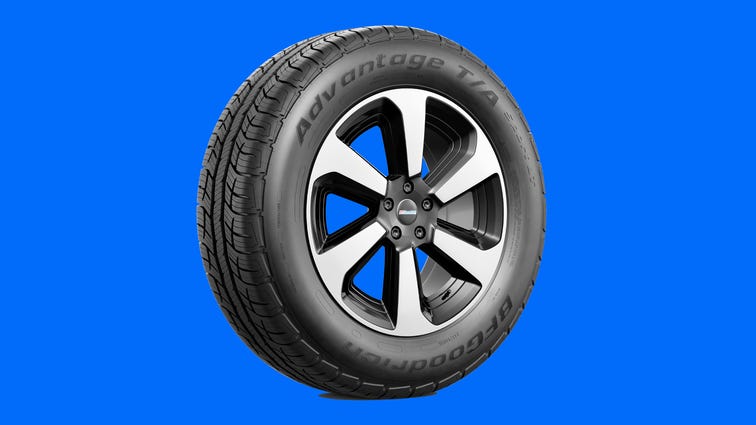

BFGoodrich Tires
These BFGoodrich all-season tires are suited for trucks, SUVS and crossovers. They provide good handling in all conditions, even in winter weather. The thee-peak mountains snowflake, or “3PMSF,” symbol on the side indicates that it’s rated for winter weather, so if you live in colder climates you’ll find this ideal for your trucks any time of year.
It features a symmetrical tread pattern that resists wear and Next Generation Equal Tension Containment System technology that enhances high speed handling and stability. It has wide, deep groves to channel water away from the contact patch and a tread pattern that improves bite on wet or lightly snow-covered roads.

 \n ","topic":"","ttag":"","searchDim":"article-body|listicle|image","variant":"article-body|listicle|image","viewguid":"","event":"listicle|image|9","correlationId":"","_destCat":"https:\/\/www.tirerack.com\/tires\/tires.jsp?tireMake=Firestone&tireModel=WeatherGrip","productName":"","formatType":"IMAGE","location":"LIST","position":9,"sku":"","dwLinkTag":"article-body|listicle|image","selector":"#article-body #listicle-5c581c48-a405-4156-b802-a9699414be62 .itemImage"}}” rel=”noopener nofollow” target=”_blank”>
\n ","topic":"","ttag":"","searchDim":"article-body|listicle|image","variant":"article-body|listicle|image","viewguid":"","event":"listicle|image|9","correlationId":"","_destCat":"https:\/\/www.tirerack.com\/tires\/tires.jsp?tireMake=Firestone&tireModel=WeatherGrip","productName":"","formatType":"IMAGE","location":"LIST","position":9,"sku":"","dwLinkTag":"article-body|listicle|image","selector":"#article-body #listicle-5c581c48-a405-4156-b802-a9699414be62 .itemImage"}}” rel=”noopener nofollow” target=”_blank”>
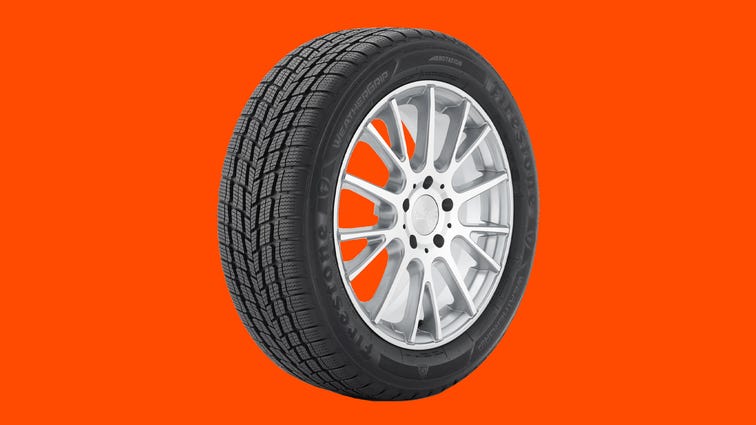

Tire Rack
While all-season tires are rated for any kind of weather, those who live where there’s often heavy rain will want tires designed to handle all that moisture. The Firestone WeatherGrip offers not just traction in wet weather, but also features the three-peak mountain snowflake symbol that indicates it’s also rated for snow and ice.
These all-season tires make short work of wet roads with Firestone’s Hydro-Grip Technology Package. It provides better traction in standing water with deep groves to help resist hydroplaning. In addition to good wet performance, the tread pattern also improves traction in light snow making this a good tire in a variety of poor road conditions. It comes with a five-year and 65,000-mile tread life warranty.

 \n ","topic":"","ttag":"","searchDim":"article-body|listicle|image","variant":"article-body|listicle|image","viewguid":"","event":"listicle|image|10","correlationId":"","_destCat":"https:\/\/www.tirerack.com\/tires\/tires.jsp?tireMake=Goodyear&tireModel=Assurance%20WeatherReady","productName":"","formatType":"IMAGE","location":"LIST","position":10,"sku":"","dwLinkTag":"article-body|listicle|image","selector":"#article-body #listicle-9c42fd77-1cc9-4374-b66b-9b47054869ae .itemImage"}}” rel=”noopener nofollow” target=”_blank”>
\n ","topic":"","ttag":"","searchDim":"article-body|listicle|image","variant":"article-body|listicle|image","viewguid":"","event":"listicle|image|10","correlationId":"","_destCat":"https:\/\/www.tirerack.com\/tires\/tires.jsp?tireMake=Goodyear&tireModel=Assurance%20WeatherReady","productName":"","formatType":"IMAGE","location":"LIST","position":10,"sku":"","dwLinkTag":"article-body|listicle|image","selector":"#article-body #listicle-9c42fd77-1cc9-4374-b66b-9b47054869ae .itemImage"}}” rel=”noopener nofollow” target=”_blank”>


Goodyear
If you’re searching for all-season tires that can handle serious snow, then the Goodyear Assurance WeatherReady is a good choice. It meets industry standards for severe snow service and includes the three-peak mountains snowflake symbol on the sidewall. Its unique features include 3D TreadLock Technology Blades, which help provide added cornering stability when roads are slick.
It’s equally well-suited to wet summer weather with a groove pattern that wicks water away from the tire to resist hydroplaning. Goodyear also added silica to the tread compound specifically to help with traction on wet roads. These all-season tires have a six-year, 60,000-mile tread life warranty.

 \n ","topic":"","ttag":"","searchDim":"article-body|listicle|image","variant":"article-body|listicle|image","viewguid":"","event":"listicle|image|11","correlationId":"","_destCat":"https:\/\/www.tirerack.com\/tires\/tires.jsp?tireMake=Firestone&tireModel=Destination%20LE3","productName":"","formatType":"IMAGE","location":"LIST","position":11,"sku":"","dwLinkTag":"article-body|listicle|image","selector":"#article-body #listicle-34f26a9a-235d-4615-8223-a40214d20592 .itemImage"}}” rel=”noopener nofollow” target=”_blank”>
\n ","topic":"","ttag":"","searchDim":"article-body|listicle|image","variant":"article-body|listicle|image","viewguid":"","event":"listicle|image|11","correlationId":"","_destCat":"https:\/\/www.tirerack.com\/tires\/tires.jsp?tireMake=Firestone&tireModel=Destination%20LE3","productName":"","formatType":"IMAGE","location":"LIST","position":11,"sku":"","dwLinkTag":"article-body|listicle|image","selector":"#article-body #listicle-34f26a9a-235d-4615-8223-a40214d20592 .itemImage"}}” rel=”noopener nofollow” target=”_blank”>


Tire Rack
Highway cruising calls for a tire that delivers a quiet, comfortable ride and the Firestone Destination LE3 is solid choice. It minimizes road noise using a rubber compound and tread design that is focused on ride quality.
These highway tires also deliver good performance with a full-depth tread that helps ensure traction is retained even as that tread wears. Unique slots in the tread pattern help pull water away from the tire to improve traction in wet weather and reduce the chance of hydroplaning while also enhancing traction in winter conditions. This tire has a five-year and 70,000-mile tread life warranty.

 \n ","topic":"","ttag":"","searchDim":"article-body|listicle|image","variant":"article-body|listicle|image","viewguid":"","event":"listicle|image|12","correlationId":"","_destCat":"https:\/\/www.tirerack.com\/tires\/tires.jsp?tireMake=Kumho&tireModel=Crugen%20HT51","productName":"","formatType":"IMAGE","location":"LIST","position":12,"sku":"","dwLinkTag":"article-body|listicle|image","selector":"#article-body #listicle-586b4b53-86a5-400b-b8f9-34bd56966647 .itemImage"}}” rel=”noopener nofollow” target=”_blank”>
\n ","topic":"","ttag":"","searchDim":"article-body|listicle|image","variant":"article-body|listicle|image","viewguid":"","event":"listicle|image|12","correlationId":"","_destCat":"https:\/\/www.tirerack.com\/tires\/tires.jsp?tireMake=Kumho&tireModel=Crugen%20HT51","productName":"","formatType":"IMAGE","location":"LIST","position":12,"sku":"","dwLinkTag":"article-body|listicle|image","selector":"#article-body #listicle-586b4b53-86a5-400b-b8f9-34bd56966647 .itemImage"}}” rel=”noopener nofollow” target=”_blank”>


Tire Rack
These Kumho all-season tires deliver a blend of comfort and capability with a quiet ride. Their asymmetric tread design is specially molded to maximize tread life and provide optimum stability and control. It also has grooves that improve water flow-through in wet weather with edges that dig in when the road is covered with light snow. The 3PMSF symbol shows the tire is rated for severe snow service.
The structure of the tire includes a two-ply polyester cord. This not only improves the tire’s strength, but also helps deliver a quiet and smooth ride. These tires come with a six-year and 70,000-mile tread life warranty.

 \n ","topic":"","ttag":"","searchDim":"article-body|listicle|image","variant":"article-body|listicle|image","viewguid":"","event":"listicle|image|13","correlationId":"","_destCat":"https:\/\/www.tirerack.com\/tires\/tires.jsp?tireMake=Bridgestone&tireModel=Turanza%20QuietTrack","productName":"","formatType":"IMAGE","location":"LIST","position":13,"sku":"","dwLinkTag":"article-body|listicle|image","selector":"#article-body #listicle-c5aabb3a-fab3-4238-a299-ab84e8460f4a .itemImage"}}” rel=”noopener nofollow” target=”_blank”>
\n ","topic":"","ttag":"","searchDim":"article-body|listicle|image","variant":"article-body|listicle|image","viewguid":"","event":"listicle|image|13","correlationId":"","_destCat":"https:\/\/www.tirerack.com\/tires\/tires.jsp?tireMake=Bridgestone&tireModel=Turanza%20QuietTrack","productName":"","formatType":"IMAGE","location":"LIST","position":13,"sku":"","dwLinkTag":"article-body|listicle|image","selector":"#article-body #listicle-c5aabb3a-fab3-4238-a299-ab84e8460f4a .itemImage"}}” rel=”noopener nofollow” target=”_blank”>
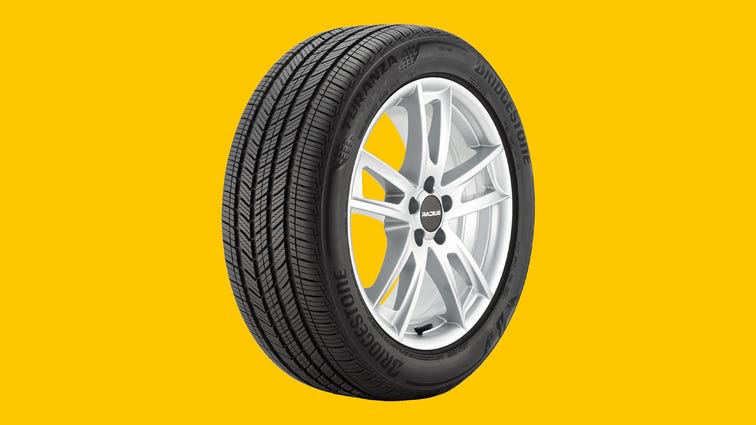

Tire Rack
This grand touring all-season tire from Bridgestone is designed to appeal to those who drive luxury cars, sedans, crossovers and minivans. Those vehicles tend to put a priority on passenger comfort and the Turanza QuietTrack enhances that comfort. It delivers good traction on both wet and lightly snow-covered roads, and it has a long tread life with a five-year and 80,000-mile tread life warranty.
Reviewers praise its smooth and quiet ride that remains composed even over rough or pebbled road surfaces. A specially molded asymmetric tread pattern provides excellent traction while also helping reduce noise. It also has a more rounded contact patch that helps reduce vibration.

 \n ","topic":"","ttag":"","searchDim":"article-body|listicle|image","variant":"article-body|listicle|image","viewguid":"","event":"listicle|image|14","correlationId":"","_destCat":"https:\/\/www.tirerack.com\/tires\/tires.jsp?tireMake=Michelin&tireModel=Pilot%20Sport%20All%20Season%204","productName":"","formatType":"IMAGE","location":"LIST","position":14,"sku":"","dwLinkTag":"article-body|listicle|image","selector":"#article-body #listicle-c1c66715-605e-467e-926d-83270ae62f1a .itemImage"}}” rel=”noopener nofollow” target=”_blank”>
\n ","topic":"","ttag":"","searchDim":"article-body|listicle|image","variant":"article-body|listicle|image","viewguid":"","event":"listicle|image|14","correlationId":"","_destCat":"https:\/\/www.tirerack.com\/tires\/tires.jsp?tireMake=Michelin&tireModel=Pilot%20Sport%20All%20Season%204","productName":"","formatType":"IMAGE","location":"LIST","position":14,"sku":"","dwLinkTag":"article-body|listicle|image","selector":"#article-body #listicle-c1c66715-605e-467e-926d-83270ae62f1a .itemImage"}}” rel=”noopener nofollow” target=”_blank”>
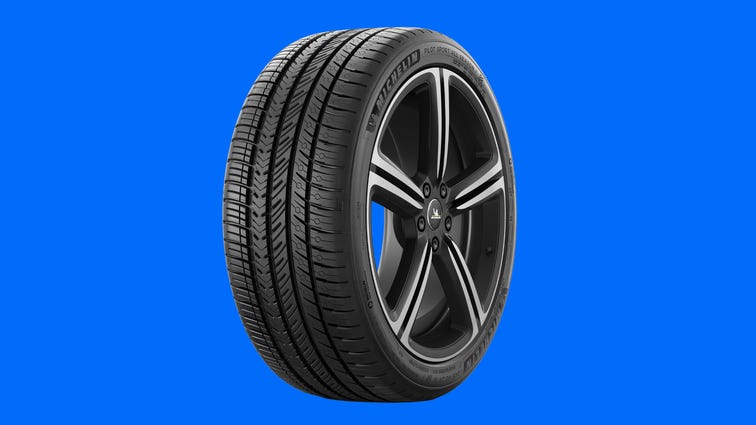

Michelin
This tire is ideally suited to those who drive performance cars, whether it’s a coupe, sedan or high-end sports car. It received top marks from both experts and customers who chose to put it to the test on their personal vehicles. The Michelin Pilot Sport All Season 4 puts the focus on performance handling, which means it’s especially good on dry or wet roads but is only suitable for light snow rather than serious winter weather.
It has an asymmetric tread design with reinforced outer shoulder blocks to help improve lateral grip. There’s also Michelin’s Dynamic Response Technology, which evenly distributes pressure along the contact patch for better grip during hard cornering. Circumferential channels help prevent hydroplaning while a silica compound improves traction on wet roads. This tire comes with a six-year and 45,000-mile tread life warranty.

 \n ","topic":"","ttag":"","searchDim":"article-body|listicle|image","variant":"article-body|listicle|image","viewguid":"","event":"listicle|image|15","correlationId":"","_destCat":"https:\/\/www.tirerack.com\/tires\/tires.jsp?tireMake=Pirelli&tireModel=Cinturato%20P7%20All%20Season%20Run%20Flat","productName":"","formatType":"IMAGE","location":"LIST","position":15,"sku":"","dwLinkTag":"article-body|listicle|image","selector":"#article-body #listicle-7b7606f3-6d24-427b-9bdd-cbbbc5e36176 .itemImage"}}” rel=”noopener nofollow” target=”_blank”>
\n ","topic":"","ttag":"","searchDim":"article-body|listicle|image","variant":"article-body|listicle|image","viewguid":"","event":"listicle|image|15","correlationId":"","_destCat":"https:\/\/www.tirerack.com\/tires\/tires.jsp?tireMake=Pirelli&tireModel=Cinturato%20P7%20All%20Season%20Run%20Flat","productName":"","formatType":"IMAGE","location":"LIST","position":15,"sku":"","dwLinkTag":"article-body|listicle|image","selector":"#article-body #listicle-7b7606f3-6d24-427b-9bdd-cbbbc5e36176 .itemImage"}}” rel=”noopener nofollow” target=”_blank”>
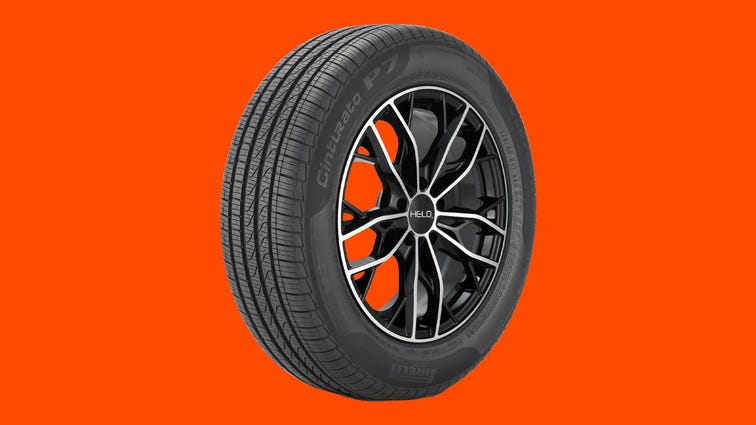

Tire Rack
A flat tire can be a huge headache, but run flat tires make dealing with a flat much easier. They’re designed to still let you drive for a short distance so you can make your way to a repair shop without having to call for a tow truck or risk damaging your vehicle. These all-season tires from Pirelli have self-supporting, run-flat technology that lets them function for up to 50 miles at speeds of up to 50 mph.
It has a low-rolling resistance tread compound that provides strong grip on wet and dry roads while improving fuel economy. An asymmetric tread helps promote even wear and a series of circumferential channels wicks water away from the contact patch for better traction.
Comparison of the best all-season tires for 2022
| Product | Sizes | Starting price | |
| Best all-season tires overall | Michelin CrossClimate2 | 16-20 inches | $164 |
| Best all-season tires overall runner-up | Continental PureContact LS | 16-20 inches | $140 |
| Best all-season tires if money is no object | Michelin Primacy Tour A/S | 17-22 inches | $194 |
| Best all-season tires for the money | Yokohama Avid Ascend GT | 15-20 inches | $112 |
| Best long-lasting all-season tires | Goodyear Assurance MaxLife | 15-20 inches | $123 |
| Best all-season tires for SUVs | Pirelli Scorpion AS Plus 3 | 17-22 inches | $164 |
| Best all-season tires for minivans | Yokohama Geolander CV G058 | 16-20 inches | $162 |
| Best all-season tires for pickup trucks | BFGoodrich Advantage T/A Sport LT | 15-20 inches | $129 |
| Best all-season tires for rain | Firestone WeatherGrip | 15-19 inches | $126 |
| Best all-season tires for snow | Goodyear Assurance WeatherReady | 15-20 inches | $135 |
| Best all-season tires for highway driving | Firestone Destination LE3 | 15-22 inches | $139 |
| Best all-season tires for a quiet ride | Kumho Crugen HT51 | 15-22 inches | $137 |
| Best all-season tires for a comfortable ride | Bridgestone Turanza Quiet Track | 15-20 inches | $145 |
| Best high performance all-season tires | Michelin Pilot Sport All Season 4 | 16-22 inches | $159 |
| Best all-season run-flat tires | Pirelli Cinturato P7 All Season Run Flat | 16-19 inches | $170 |
What are all-season tires?
All-season tires are designed to provide a quiet ride with good handling in most weather conditions as opposed to other tires that are more specialized. “A good all-season tire is engineered to combine tread design and materials in order to provide good traction in both moderate winter conditions as well as summer wet conditions, said Russell Shepherd, technical communications director at Michelin. Winter tires have more intricate treads and rubber compounds that retain their flexibility in the cold. Summer tires often have less complicated treads with compounds designed not to get too soft in high heat.
An all-season tire is the best of both worlds, but it doesn’t function as well in the extremes of either season. If you live in an extreme weather environment, then you may want a more specialized tire. “Winter tires are designed to provide traction in both snow and ice. They are marked with a ‘3PMSF’ which indicates they meet a minimum level of snow traction based on testing,” said Shepherd. What about the other extreme? “Summer tires use tread compounds and sculpture designs to provide maximum dry and damp wet grip. As the tread compound on these tires approach freezing temperatures, grip levels begin to degrade.”
Pricing for all-season tires can run from a low of around $100 to as high as $400, so there’s quite a price spread. You get what you pay for to a point, but the large selection of quality all-season tires available from reputable tire brands makes it easy to find one that fits your needs and your budget. You’ll also save a few dollars with all-season tires by avoiding the cost of having your tires swapped out as the seasons change.
It’s important to evaluate the tread when selecting an all-season tire, as it’s a strong factor in determining the tire’s reliability and performance. A good all-season tire will have grooves called sipes that allow water to pass through, while asymmetric tread patterns improve traction. Additionally, high-quality tires and treads are made of materials that withstand both cold temperatures and high speeds.
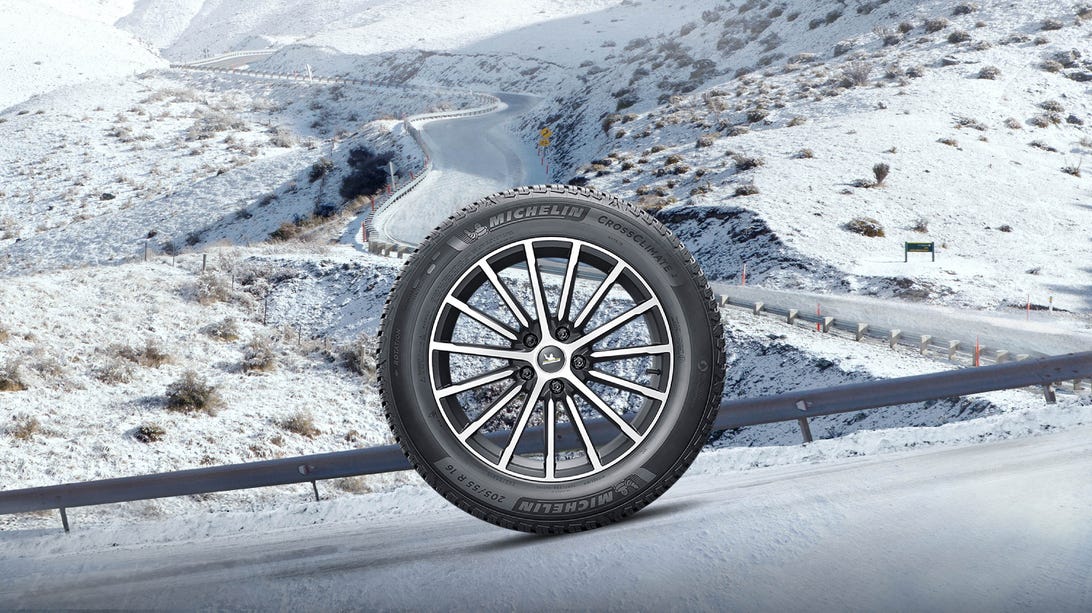

Types of all-season tires
All-season tires are broken down into several categories. This might seem confusing, but the idea is to help you find the right all-season tire for your vehicle and how you drive.
- Touring: This is the basic all-season tire suited to most passenger cars. It provides a smooth ride that delivers a good balance of comfort and traction.
- Grand touring: This is a step up from a touring tire. It offers a better ride with more refined tread patterns that reduce noise, vibration and harshness. They also come at a higher price.
- Highway: Much like a grand touring tire, a highway tire delivers a smooth, quiet and well-mannered ride that focuses on highway driving. That includes better traction at higher speeds and more controlled cornering.
- Crossover and SUV touring: This does the same thing as the touring tires found on sedans but is designed to manage the increased weight of SUVs. Many of these tires have added winter and rain capability since these vehicles are a popular choice in wintry regions.
Reading a tire sidewall
The sidewall provides specific information about a tire. There’s a method to the madness so once you know the formula, you can read the sidewall on any tire and know exactly what kind of tire is on your vehicle. Let’s break down the basics.
Example: P 225/50 R 17 98 H
- Tire class: P stands for a P-metric or passenger tire. Light truck tires have an LT.
- Width: This number (225) is the width of the tread in millimeters from side to side.
- Aspect ratio: This number indicates the height of the sidewall as a percentage of the width, which is 50% in this example.
- Construction type: The R stands for radial, which is pretty much all you’ll see these days.
- Rim diameter: This is the diameter of the wheel that this tire will fit. Our example tire fits a 17-inch wheel.
- Load index: Covering a rating range from 70 to 126, this number lets you know how much weight a tire can safely manage and is generally only a concern for trucks that carry cargo.
- Speed rating: Depending on the letter, your tires may be rated anywhere from 75 mph to 186 mph. An H tire falls in the middle with a rating of 130 mph. Regardless of your tire speed rating, always obey posted speed limits.
Proper tire care
One of the biggest things you can do to make sure you tire doesn’t wear out prematurely is to keep it properly inflated. When I asked TJ Campbell, tire information and testing manager at Tire Rack for his top two tire maintenance tips, he responded, “Inflation, inflation, inflation, inflation, inflation. Make that my top five!” The reason this is so important is that your tire inflation changes over time even if your tire doesn’t have any leaks or damage.
“It drops about 1 psi per month and changes 1 psi for every 10 degrees the temperature changes,” Campbell said. If the weather gets cold and you haven’t checked your tire pressure since spring, the pressure is going to be way off, which causes uneven and premature wear. Not only will that have you shelling out money for a replacement sooner, but it’ll also increase the chances of tire failure. “Proper inflation pressure allows tires to do everything they’re supposed to do. If your tire is underinflated by 20%, then its life could be reduced by as much as 50%,” said Campbell. The correct tire pressure for you tires can be found on the sticker on the door jamb of your vehicle.
Campbell also suggest putting a priority on tire rotation: “Rotate early. Rotate often.” This is especially key when tires are new. “Tires are most susceptible to wear when they’re new, so being even slightly out of spec has a big effect on new tires.” Rotating your tires at least every 5,000 to 7,500 miles helps ensure all your tires wear evenly, but you can’t really do this too often. The rotation pattern depends on your vehicle and tires with some rotating front to back, others side to side, and sometimes even a combination of those two. Check your owner’s manual to see what the manufacturer recommends.
It’s also important to check your alignment. Bumps in the road, potholes and especially off-road driving can wreak havoc with your alignment. You may even feel a telltale vibration in the wheel, but there’s also a possibility everything will feel just fine even when there’s a problem. Checking your tire alignment, and correcting it if necessary, helps prevent premature tire wear.
When should you replace a tire?
Each tire has a recommended tread life. Once you pass that mileage limitation, you should be looking for a new set of tires, but your tire may need to be replaced sooner. It’s about more than just having a functioning tread.
“Damage, bulges, bald spots and severe cracking are all immediate cause to take a tire out of service,” said Campbell. Tires are an integral part of your car. If your tire is failing, it’s not safe to keep driving. Some damage, like punctures, may be able to be repaired, but that’s not always possible. Sidewall damage is particularly troublesome and often requires tire replacement rather than repair. Seek an expert’s assistance and if they say it’s not safe to repair, then it’s wise to follow that advice.
Even if you’re within the recommended tread life and there’s no specific damage, if your tread is worn out, then replace your tires. Tires have wear bars that become visible in the tread pattern when the tread is too low. There’s also the good old penny test. Take a penny and insert it between the treads with Lincoln’s head facing down. If you can see the top of his head over the tread, then it’s below the recommended 2/32 of an inch and is due for replacement.
“This is when your tires will fail, so people call it the legal limit,” said Campbell. While this is true in state’s that require inspections, it’s not an entirely accurate way to look at things. “A tread depth of 2/32 is not adequate for all driving conditions,” said Campbell. It may work fine on a dry road, but rain or snow at this depth could be a problem.
Campbell recommends a depth of 4/32 in these conditions. You can check this depth by using a quarter instead of a penny and looking for the top of Washington’s head. If you drive in snow, then you need closer to 6/32 of tread depth. Sorry, no coin trick for this one.
Uneven wear also means it’s time to replace your tires. The possibility of uneven wear is a good reason to check the depth of your tread in multiple locations on each tire. Test it on both edges, the middle and in a couple of different areas in case it’s mostly fine but worn only in one region. Sometimes you can even feel uneven wear with your hand. Run your palm along your tire and if it feels smooth in some spots but not in others, then the wear is uneven, and the tire should be replaced.
Age is also key. Even a tire with low mileage needs to be replaced if it’s old because rubber degrades over time. “We recommend replacing tires after six years of service or 10 years from the date of manufacture,” said Campbell. You can find that date on the sidewall of your tire if you’re unsure. Cracks, bulges and problems with tire pressure are all are signs of tires are getting old and need to be replaced.
What to look for in a new tire
Tires perform the essential task of maintaining traction, so it’s important to get the right tires not just for your vehicle, but for how you drive. “Our philosophy is finding the right tire for how, where and what you drive,” said Campbell. While you can go with a cheap no-name tire, it’s not a great idea. “Major manufacturers are more tech-focused and do things at a higher level,” said Campbell. “They have the ability, know-how and skill to make tires that perform at a high level across the board. Without those things, your end product isn’t as good.”
Tires are key in keeping your vehicle under control, so you need to be sure you’re getting what you expect when you buy a new set. The thorough testing conducted by the top brands ensures you get a tire that does what you want it to do, whether that’s highway cruising or making your way through snow. A known brand also brings newer technology in terms of tread patterns and compounds. Summer tires and winter tires have rubber formulations tailored for those temperatures, so be sure to get the tire that suits your environment.
Yes, you will pay more for a brand name than for random tires from some guy who knows a guy who can get you a deal. While brand names cost more, remember you don’t need to buy a brand’s most expensive tire. Highly specialized variants for snow, off-roading or performance driving cost more but aren’t necessary unless you plan to do that kind of driving. You’ll also pay more for tires with a longer tread life, so consider one from a reputable brand but a shorter life if your budget is tight.
Start by finding tires that fit (that’s the rim diameter mentioned earlier) and then narrow it down those choices based on how and where you drive. A performance tire is a great choice for high-speed driving, but you’re going to want an off-road tire if you’re hitting the dirt.
Do you need to replace all your tires at once?
It’s not usually recommended to replace one tire at a time because the tread wears down the more you drive. If your tires are old and you only replace one, then the thicker tread on the new tire can cause issues with overall handling and mess with your alignment. If your other tires are relatively new, you may be OK, but ask a tire expert to assess your specific situation.
It’s best to replace all four, but if you’re on a modest budget, then replace either the two front or two rear tires. They’ll have about the same amount of wear, so you won’t risk as many issues. Look for the same tires or as close as possible to what is already on your vehicle.
Many all-wheel drive vehicles include manufacture’s recommendations to replace all four tires at once. While an expensive option, you should always follow the manufacturer’s recommendations when it comes to tire replacement for your vehicle.
Written by Nicole Wakelin for CNET
More tire recommendations
All-season tire FAQs
What are the best all-season tire brands?
There’s no one brand that makes the best all-season tire. Most of the well-known tire companies offer a selection of all-season tires that are well-suited to a wide range of conditions You’ll see many of their tires on this list, including options from Michelin, Goodyear, Firestone and Continental. The key is to check out reviews of the tire you’re considering and to be sure it’s recommended for your vehicle and your type of driving.
What are the best all-season tires?
The wide range of available all-season tires means you have lots of choices that will work beautifully for your vehicle. Look for a brand with a solid reputation and a tire that has strong consumer and expert ratings. Next, focus on what you want from your tires. Is your priority a quiet ride, wet weather traction or winter weather performance? Don’t forget to consider the tread life since tires with a longer tread life will save you money by needing less frequent replacement.
What makes a good all-season tire?
A good all-season tire has a balance of features. It should be able to perform well in a wide range of conditions. That includes hot weather, wet roads and winter weather. It should have a good tread life rating and the ride should be smooth and quiet. Do your research when it comes time to buy a set of all-season tires so that what you get meets expectations and your personal priorities.
Which all-season tires are best in the snow?
While the whole point of an all-season tire is that it can handle any weather, not all manage snow equally. Your best bet for extreme cold and snow is always a snow tire, but there are all-season tires that are rated for winter conditions. Look for the three-peak mountains snowflake symbol on a tire to see that it’s rated for severe snow service.
What is the best affordable all-season tire?
Avoid going with a no-name bargain brand if possible. The well-known tire brands have been making tires for a long time and have the expertise to include the latest technologies and features. You can rely on these tires to perform as indicated. If your budget is tight, then still go with a brand you know, but simply pick one of their less expensive offerings.
